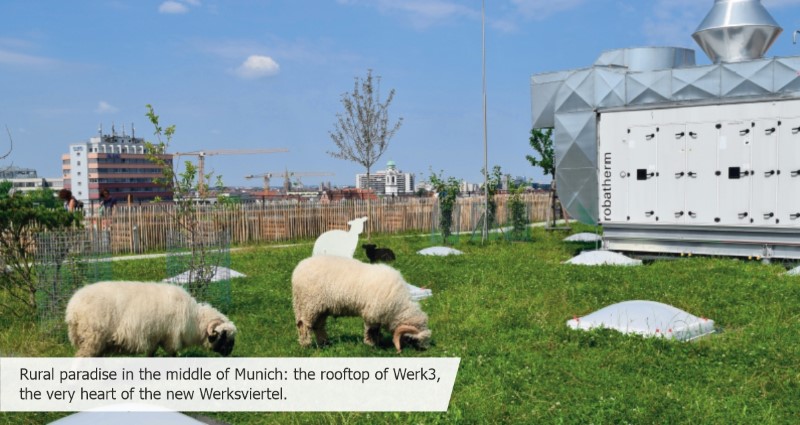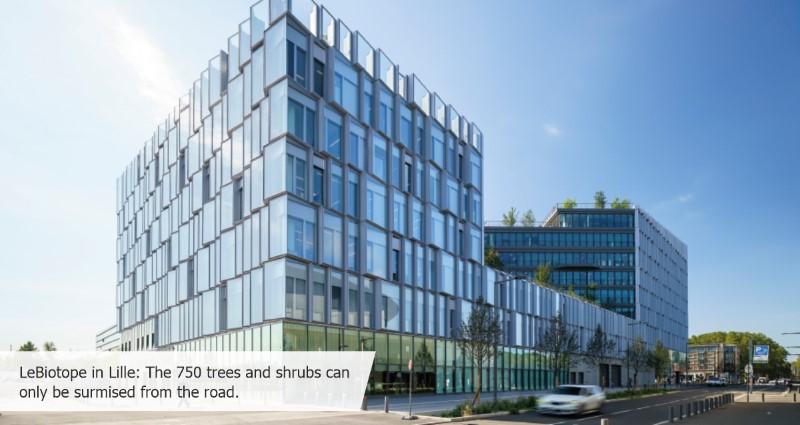A Growing Sense of Well-Being.
robatherm is exploring the positive effects of vegetated buildings.

Vegetation not only grows in many directions but in significance as well. Throughout the countryside as well as in the city. And on the roof? Although natural green areas are considered a symbol of healthy air, plants have not yet made a major appearance in architecture. It‘s time to free them from their shadowy existence. After all, the positive effects of revegetation systems have long been recognized – and are remarkably diverse.
The aesthetic aspects of greenery are probably the first to catch one‘s eye.
In this way and through skillful planting, stationary structures can be given a lively, nature-like character. Sometimes greenery is an essential part of an architectural concept, as in the robatherm building located in Jettingen-Scheppach. Here, the entire first floor was sloped and extensively greened.
In addition to the visual benefits, the tangible advantages of greening are particularly pleasant, at any time of the year.
Natural Temperature Balance
A direct comparison clarified that a flat roof covered with a standard layer of gravel and bituminized board can heat up to 80 °C [176 °F] on hot summer days. In contrast, under the same conditions, a green roof only reaches about 20 °C to 25 °C [68 °F to 77 °F]. As plant growth and soil provide insulation, they store more significant amounts of rainwater and have a cooling effect on the building through evaporation. In overheated urban areas, green rooftops can reduce the temperature comfortably. But this regulating effect not only works in the summertime. Because the layer of roof substrate, usually 15 cm to 20 cm thick and together with the vegetation, also develops an insulating function against the cold. The green rooftop ultimately remains up to 10 °C
[4 °F] warmer than a conventional covered flat roof during the winter. And less heat loss means less energy consumption.
Sensible Addition to Air Handling Technology
So a green rooftop can contribute to lesser cooling and heating needs when using indoor air handling units. In addition, strong temperature fluctuations are minimized throughout the year – which are economical and ecological advantages that should not be underestimated given the increasing number
of weather extremes due to climate change. And suppose you‘re going for renewable power generation. In that case, building greening is just as effective a contributor. The evaporation process decreases operating temperature of a photovoltaic system, allowing a photovoltaic system to produce up to 16 % more power than on an unplanted roof.

Beneficial for People and Biodiversity
In addition to such measurable benefits, however, greening up buildings can do much more. Indoors, vegetation systems increase air quality thanks to their filtering and humidifying properties. And the selection of suitable plants outside creates valuable habitat for bees and other beneficial insects. With a professional concept, greening supports human needs and biodiversity.
